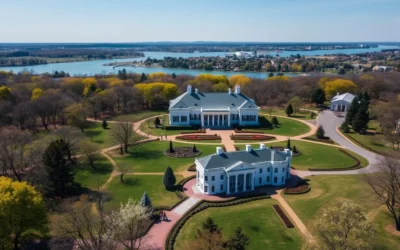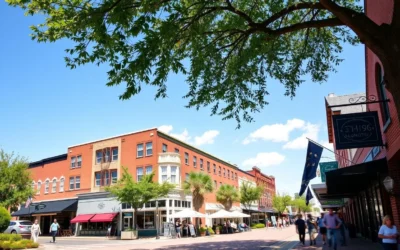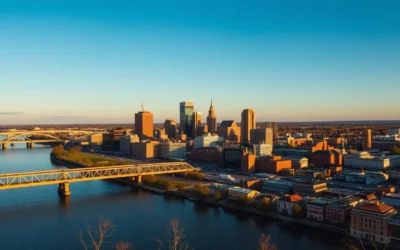As you explore the diverse landscape of Virginia, you’ll discover a rich tapestry of languages spoken across the state. The population of Virginia is exceptionally diverse, reflecting its complex immigration history and patterns over time.
While English is the official language, many other languages are also spoken by residents. The data shows that the number of people speaking multiple languages is significant, contributing to the state’s cultural identity.
You’ll gain insight into how this linguistic diversity impacts Virginia’s culture, economy, and social services.
The Linguistic Landscape of Virginia
As you explore Virginia’s linguistic landscape, you’ll discover a complex and dynamic environment influenced by various factors. The state’s diverse language profile is shaped by its history, geography, and demographic trends.
Approximately 16.4 percent of Virginia residents over the age of 4 speak a language other than English at home. With about 3.18 million households represented and an average of 2.6 people per household, this translates to around 1.36 million people using a non-English language at home.
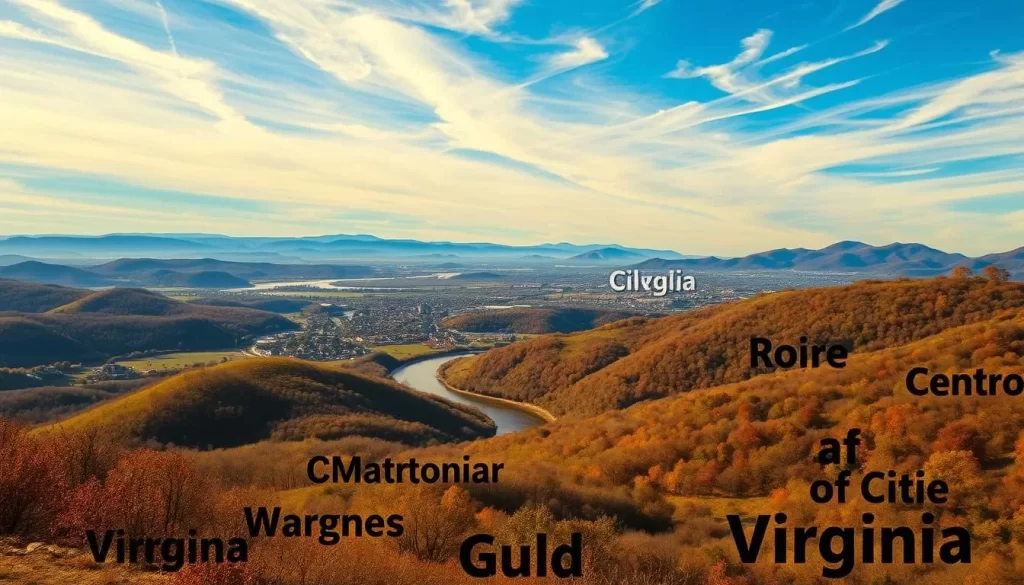
The linguistic diversity in Virginia varies significantly by region. Certain areas have higher concentrations of specific language communities. For instance, the proximity to Washington D.C. has attracted international diplomats, professionals, and immigrants, contributing to the state’s language diversity.
| Language Diversity Indicator | Virginia |
|---|---|
| Population speaking a language other than English at home | 16.4% |
| Number of people using a non-English language at home | 1.36 million |
| Average number of people per household | 2.6 |
Over time, Virginia’s linguistic landscape has evolved, with some language communities growing while others have diminished in their share of the population. The state’s universities and technology corridors have also contributed to linguistic diversity by attracting students and professionals from around the world.
Virginia’s Immigration History and Language Evolution
The story of Virginia is one of continuous immigration, with various groups arriving over the centuries and contributing to the state’s language evolution. As you journey through Virginia’s rich immigration history, you’ll discover how different populations have shaped the linguistic landscape.
Initially, English colonists founded Jamestown in 1607, establishing the first permanent English settlement in North America. Prior to this, native populations, including those speaking Algonquian, Iroquoian, and Siouan languages, were the original linguistic groups of the region. The arrival of enslaved Africans in 1619 brought new languages, eventually contributing to distinctive dialects and speech patterns in Virginia.

Over time, more migrants arrived, including Welsh and French Huguenots in the 1700s, and German and Scotch-Irish settlers who often established communities in the Shenandoah Valley. This diverse population contributed to the linguistic data of the region. For a number of years, the linguistic makeup of Virginia remained relatively stable, primarily consisting of those with European or African descent.
- The indigenous populations were the first linguistic groups in the region.
- Enslaved Africans brought their languages, influencing local dialects.
- European immigration waves, including Welsh, French Huguenots, German, and Scotch-Irish settlers, shaped the linguistic landscape.
- Modern immigration has diversified Virginia’s linguistic landscape, with significant growth in Spanish-speaking communities and the addition of numerous Asian languages.
Today, the data shows that Virginia’s population is more linguistically diverse than ever, with people from various backgrounds contributing to the state’s languages. As you explore further, you’ll understand how each wave of immigration has left its mark on place names, cultural practices, and linguistic features throughout the state.
English: The Official Language of Virginia
In Virginia, English is not just the predominant language but is officially recognized as the language of government and public services. This status reflects the state’s cultural and linguistic heritage.
The official language status of English has significant implications for the state‘s population. It affects government operations, education, and public communications. As a result, the language plays a crucial role in the daily lives of Virginia’s residents.
Virginia’s English has developed unique regional characteristics and accents, from the Tidewater region to Appalachia. This diversity is a reflection of the people who have settled in the state over the years.
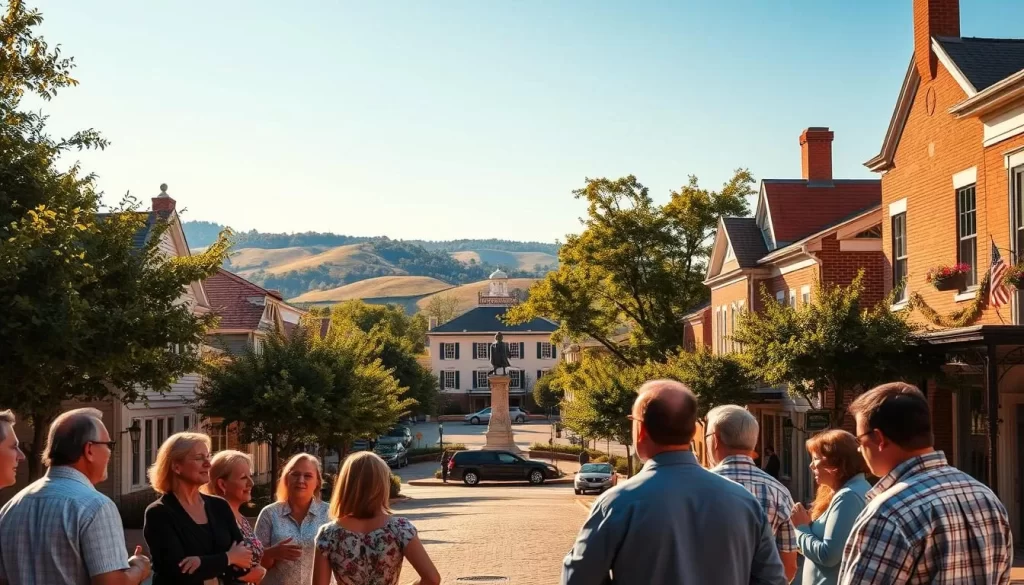
English proficiency is crucial for economic opportunities, with certain industries requiring higher levels of English fluency. This affects the population‘s ability to speak English and participate fully in the state’s economy.
The education system accommodates students who speak other languages at home, providing support for English language learning. However, non-English speakers may face challenges navigating government services, healthcare, and legal systems.
Understanding the role of English in Virginia helps you appreciate the complexities of language in the state. The balance between English and other languages creates a diverse linguistic landscape.
Language Statistics in Virginia
Delving into the language statistics of Virginia reveals a complex and multifaceted linguistic environment. Approximately 16.4 percent of Virginia residents over the age of 4 speak a language other than English at home. With about 3.18 million households and an average of 2.6 people per household, this translates to around 1.36 million people using a non-English language in their daily lives.
The data on language use in Virginia shows that a significant portion of the population has Limited English Proficiency (LEP). About 437,500 residents fall into this category, indicating a need for language services and resources. The availability of detailed data on languages spoken in Virginia allows for an analysis of the most common non-English languages and their representation in the population.
- The percentage of Virginia residents speaking a non-English language at home stands at approximately 16.4%, which is a significant share of the population.
- Translating this percentage into actual numbers reveals that about 1.36 million Virginians regularly use a non-English language.
- Limited English Proficiency data indicates that around 437,500 residents have limited ability to read, speak, write, or understand English.
- Comparing these statistics to national averages and neighboring states provides context to Virginia’s linguistic diversity.
- Language demographics vary significantly across different counties and regions, with certain areas having higher concentrations of specific language communities.
Analyzing trends in language data over time shows which language groups are growing or declining as a share of Virginia’s population. These statistics have a significant impact on policy decisions, resource allocation, and service provision throughout the state. Census data and other research methods play a crucial role in tracking language use, though accurately counting speakers of less common languages poses a challenge.
Virginia, United States: Official and Widely Spoken Languages
As you explore the linguistic landscape of Virginia, you’ll discover a diverse array of languages spoken across the state. With a population that includes long-time residents and newcomers from various parts of the world, Virginia’s linguistic profile is complex and multifaceted.
Spanish
Spanish is the most common non-English language spoken in Virginia, with approximately 616,226 residents speaking it at home. This represents about 7.67% of the state’s population. The Spanish-speaking community in Virginia is diverse, with roots in various Latin American countries.
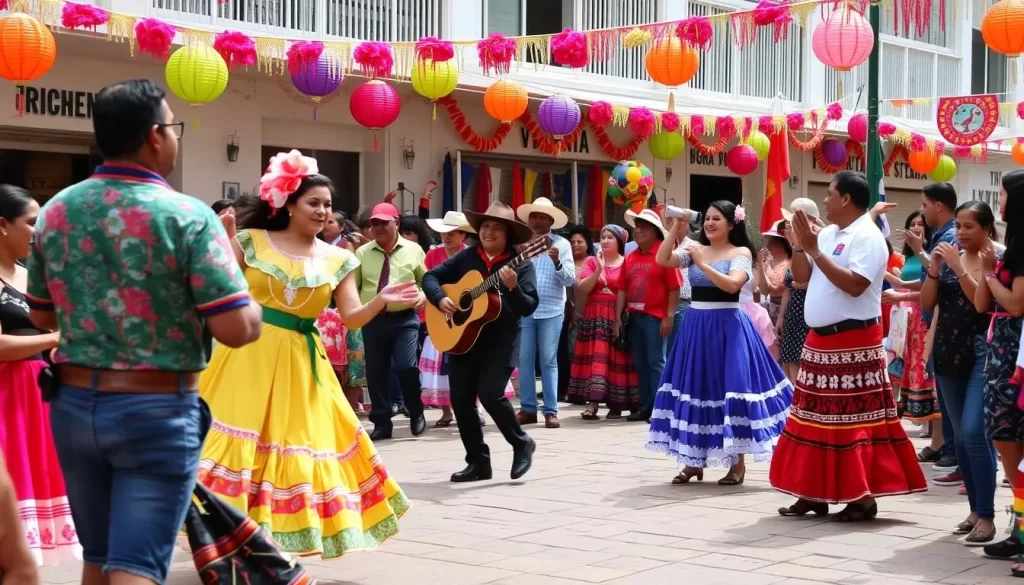
Chinese (Cantonese and Mandarin)
The Chinese language, including both Cantonese and Mandarin dialects, is spoken by around 66,186 Virginia residents, making up about 0.82% of the population. Chinese communities are found in various parts of the state, contributing to Virginia’s cultural and economic fabric.
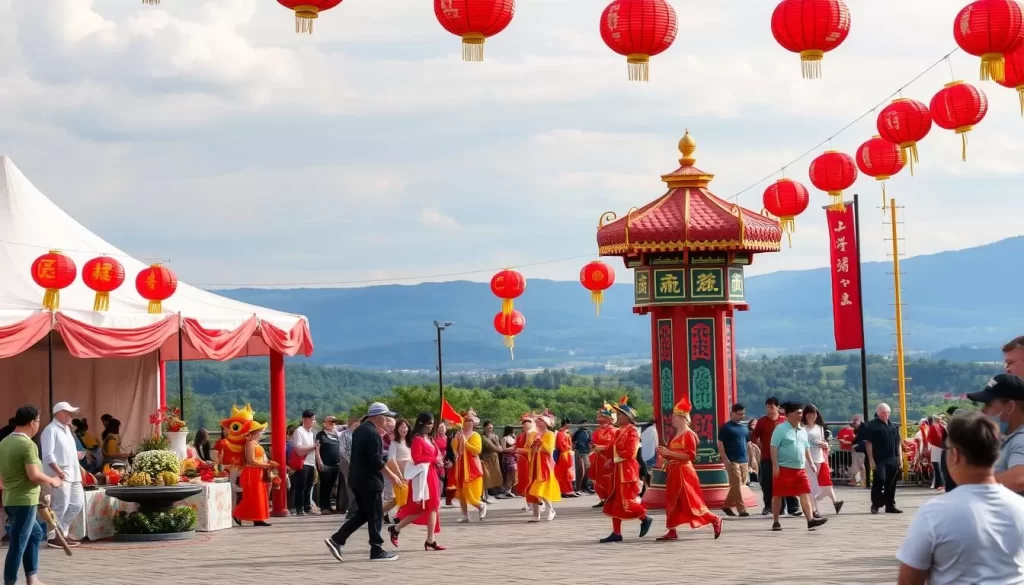
Vietnamese
Vietnamese is another significant language in Virginia, spoken by approximately 57,496 residents, or about 0.72% of the population. The Vietnamese community has a notable presence in certain regions of Virginia, enriching the state’s cultural landscape.
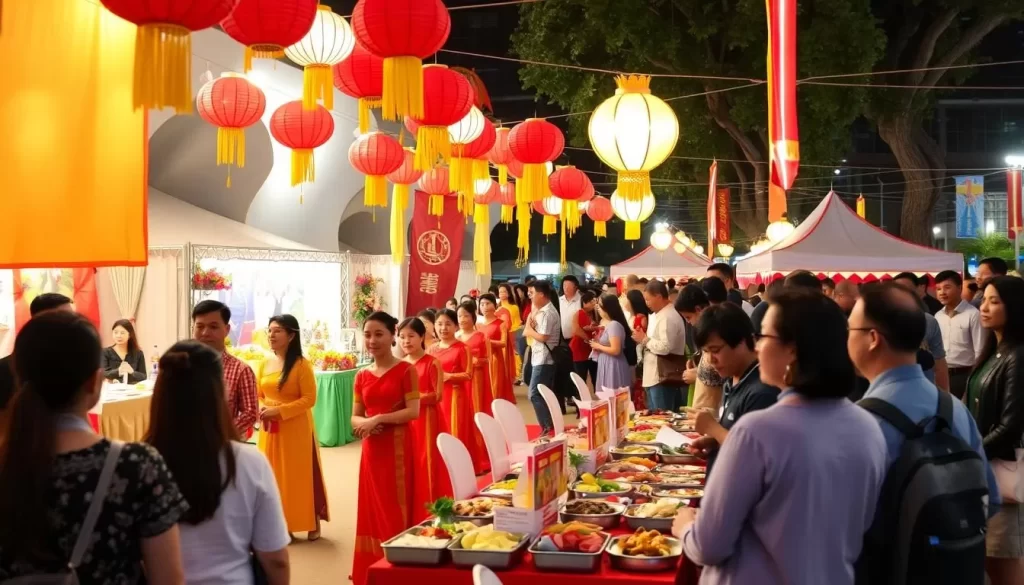
Arabic
Arabic speakers constitute a sizable community in Virginia, with around 56,632 individuals, representing about 0.70% of the population. The Arabic-speaking population reflects diverse backgrounds from various Middle Eastern and North African countries.

Korean
Korean is spoken by approximately 48,255 people in Virginia, making up about 0.60% of the population. The Korean community contributes significantly to the state’s cultural and economic diversity.

Other Prominent Languages
Beyond these languages, Virginia is home to a multitude of other linguistic communities. Tagalog is spoken by around 44,005 residents, Urdu by 38,489, Amharic and other Afro-Asiatic languages by 35,162, French by 33,050, and Persian by 32,472. These communities are distributed across the state, with certain languages concentrated in specific regions or urban centers.
These diverse language communities maintain their linguistic heritage while integrating into Virginia society through various means, including community organizations, media, religious institutions, and cultural events. This blend of languages and cultures enriches the state’s social fabric and contributes to its vibrant cultural landscape.
Limited English Proficiency in Virginia
Limited English proficiency is a significant issue in Virginia, affecting about 437,500 residents who have difficulty reading, speaking, writing, or understanding English. This demographic represents a substantial portion of the state’s population, with over 8% of the US population having limited English proficiency (LEP).
The impact of LEP is far-reaching, affecting various aspects of life, including access to essential services, navigation of government systems, and participation in civic life. To address this issue, federal civil rights laws require organizations receiving federal funding to provide language access services, including interpreters and translated materials.
Industries such as healthcare and legal services must accommodate LEP individuals, translating vital documents into the most common languages in their service areas. For example, hospitals in Virginia must translate documents into the 15 most common languages to ensure equal access to care.
- Approximately 437,500 Virginia residents have limited English proficiency.
- LEP individuals face challenges in accessing essential services and participating in civic life.
- Federal laws require organizations to provide language access services.
- Industries like healthcare must translate vital documents into common languages.
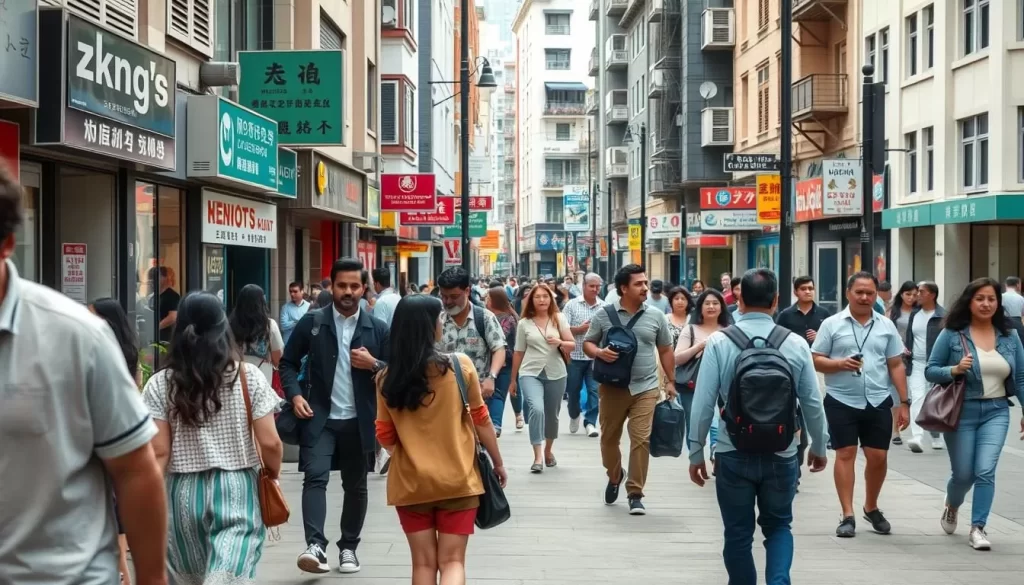
The data highlights the need for continued efforts to address the challenges faced by LEP individuals in Virginia. By understanding the data and implementing effective solutions, the state can work towards better language access and inclusion.
Language Services and Resources
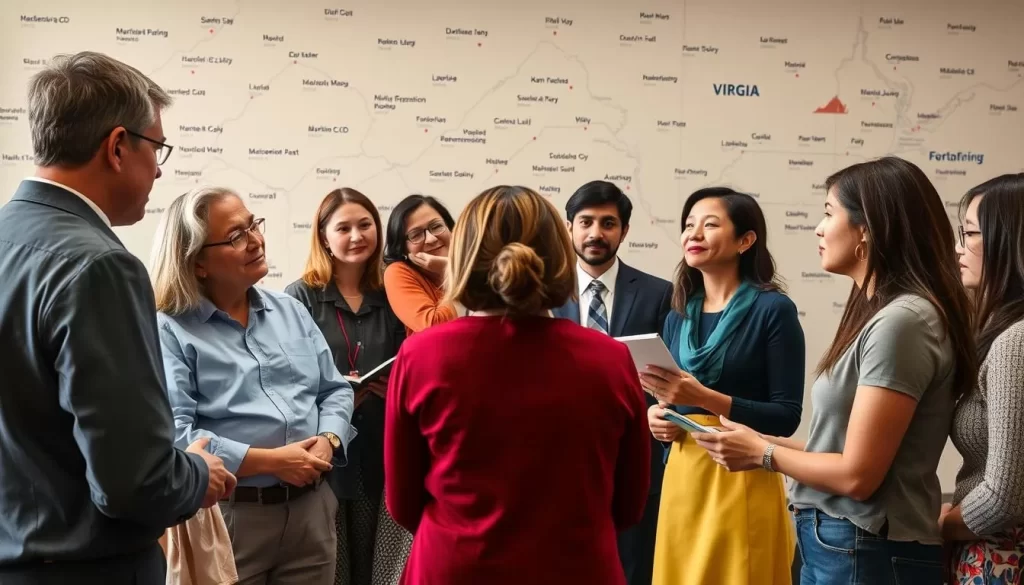
In Virginia, the diverse linguistic landscape necessitates a robust language services infrastructure. The state’s diverse population has driven the demand for translation and interpretation services. You can discover the wide range of language services and resources available to both English and non-English speakers throughout Virginia today.
The language services industry in Virginia has expanded over time to meet the increasing demand from various sectors, including government agencies, healthcare providers, educational institutions, and the legal system. These services ensure that the approximately 437,500 Limited English Proficiency (LEP) individuals can access essential services, regardless of their English proficiency.
You’ll learn about the specialized language services for healthcare settings, which ensure that LEP individuals can receive proper medical care. The legal industry in Virginia has also adapted to serve speakers of different languages, with court interpreters and translated documents ensuring equal access to justice.
The use of technology is transforming language access, with digital tools and remote interpretation services making it easier to bridge communication gaps. As a result, the language services industry is not only helping individuals but also allowing businesses to reach new markets and share in the benefits of Virginia’s diverse population.
Conclusion
As we conclude our exploration of Virginia’s linguistic landscape, it’s clear that the state’s language diversity is a reflection of its rich cultural heritage. You’ve gained a comprehensive understanding of the various languages spoken at home across the state today. The population demographics have shaped the linguistic landscape, with Spanish being the dominant non-English language.
The industry of language services has become essential in supporting healthcare, education, and business sectors. As the population continues to evolve over time, the linguistic landscape will also change, reflecting broader national trends while maintaining its unique regional character. Virginia’s linguistic diversity is a vital part of its cultural identity and community cohesion.
The above is subject to change.
Check back often to TRAVEL.COM for the latest travel tips and deals.

